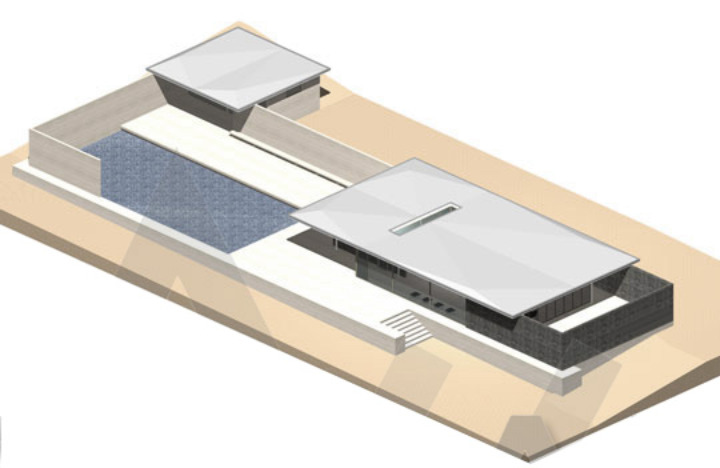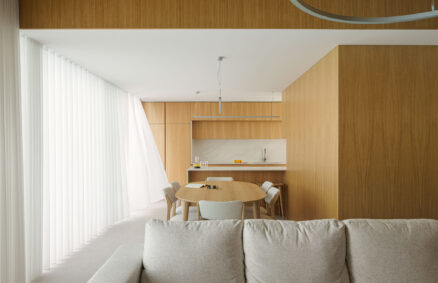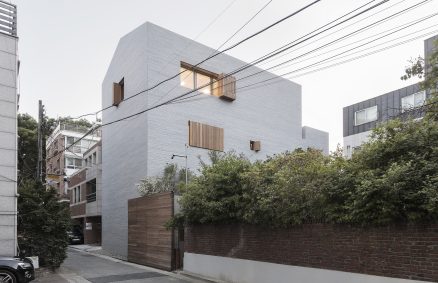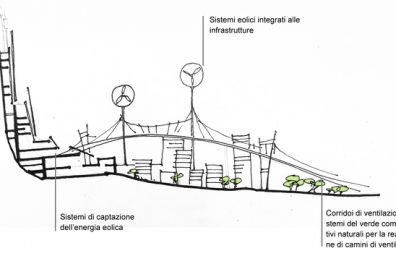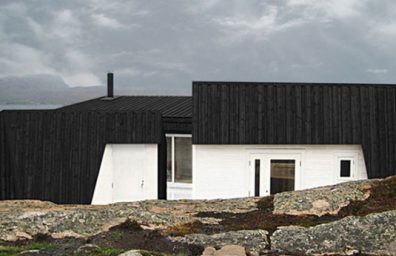For an inexperienced eye, how can it be that of a casual tourist, and already full of the wonders present in the city of Barcelona, the little Mies Pavilion could remain undetected.
Located in one of the most beautiful places in this city, with wide open spaces, green and extensive sports facilities, the neighborhood Montjuic, Being in front of this small, square pavilion may surprise you.
But if you delve into its true meaning the Pavilion that Ludwig Mies van der Rohe built for the Universal Exposition held in the Spanish city in 1929, is the third among the most emblematic works of the code-rationalist style, after the Bauhaus and Villa Savoye.
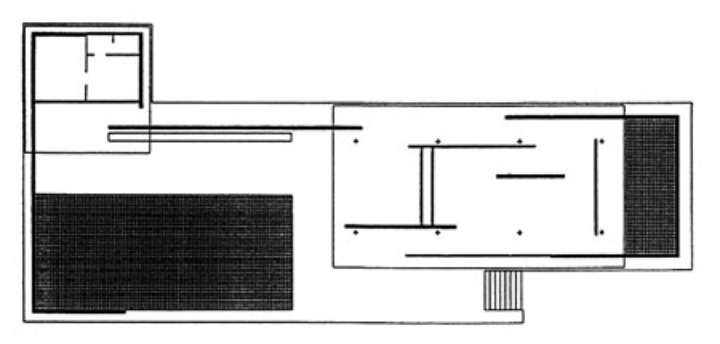
What appears to us in the face is a remake of 1983, since the original was removed the following year.
Is composed by:
a travertine base which contains high 1,20m in a corner a rectangular pool of water, where you mirror the other parts of the building and thickness to the base where it is as "dug";
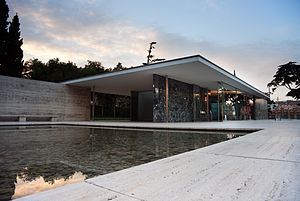
a wall plate with a bench leaning, which holds virtually and connects the coverage plans of the areas covered Pavilion, forming a dividing wall between the interior and exterior of it;
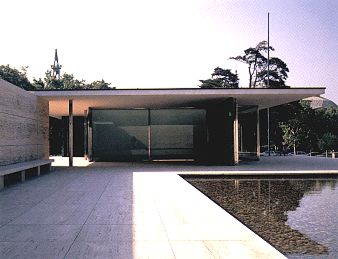
eight cross-shaped chrome struts hold up the reinforced concrete pavement that covers the actual display area, whose interior is divided with other slabs of masonry or with panels of glass and metal;
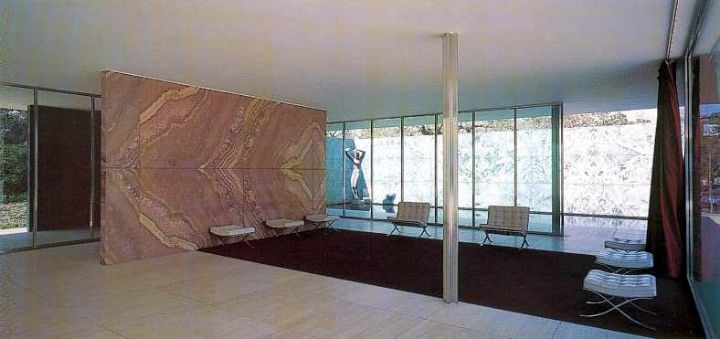
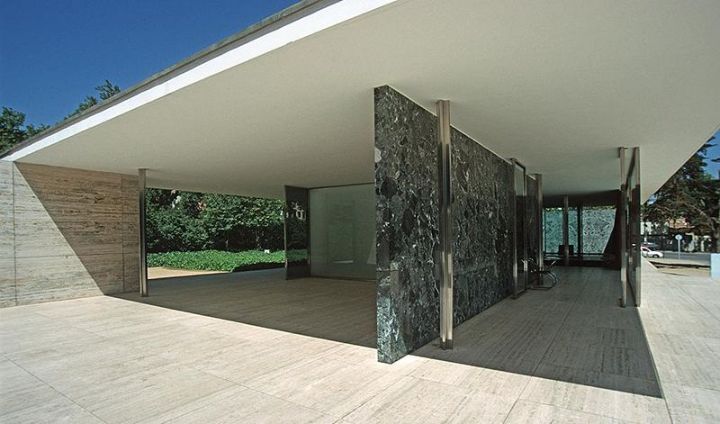
a second smaller pool of water, from which rises a figurative sculpture of George Kolbe, is placed on the shorter side of the building and is contained in a patio, surrounded on three sides by walls of onyx, which form the outside , no longer a game of slabs but a closed volume;
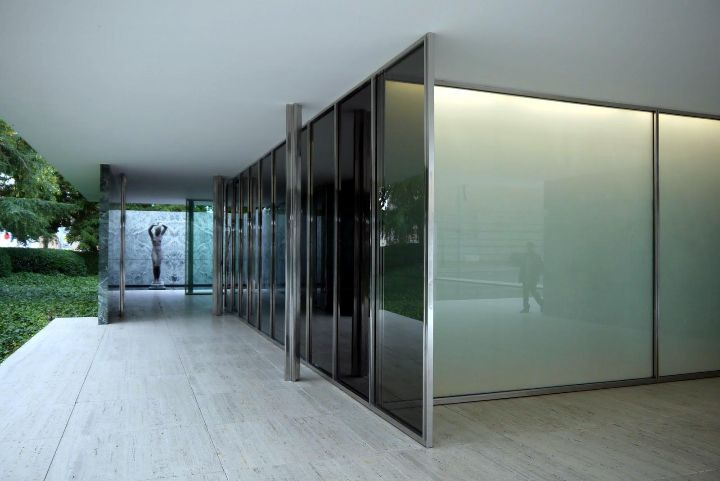
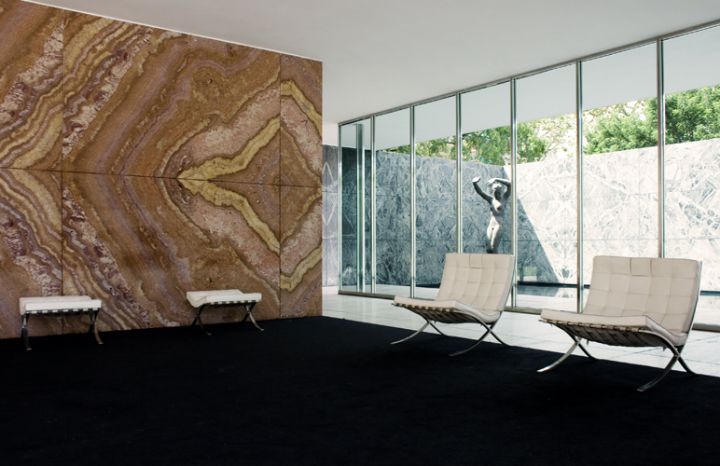
another similar volume, on the opposite side, partially surrounds the big tub, delimits the other short side of the building and fencing with increasingly erratic, the department containing two rooms for offices and services. UNo floor above the second deck area is supported by the wall above and parallel to the pool.
Its importance was to introduce significant innovations, such as the "free plan" and "flowing spaces", but above all how this work is linked to its historicity and summarizes many linguistic aspects of the Modern Movement: avant-garde and tradition. In fact, his description makes us understand how much this work owes to the style code of the neoplastic on the one hand, for the slips, interpenetrations and decomposition of the volume into planes and from the classic that we find in the short sides of the Pavilion where it is closed by walls that create volumes and no more decompositions typical of De Stijl's poetics, from the sculpture of Kolbe and from the purism of Le Corbuserian matrix, in fact the work is of extreme simplicity, we are in the logic of the only decoration admitted by Loos, that deriving from the nature of the material .
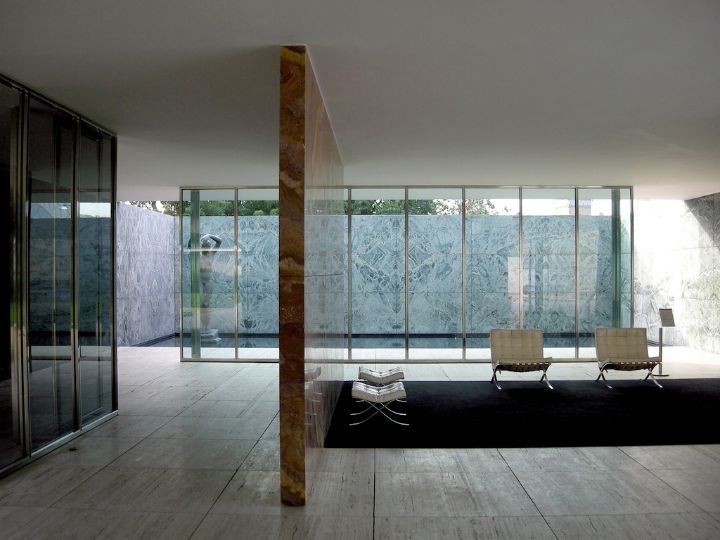
In summary it can be said that the importance of this work lies in the relationship between perimeter and area, between the geometry and the organic nature of the materials, between Neo and classicism.
